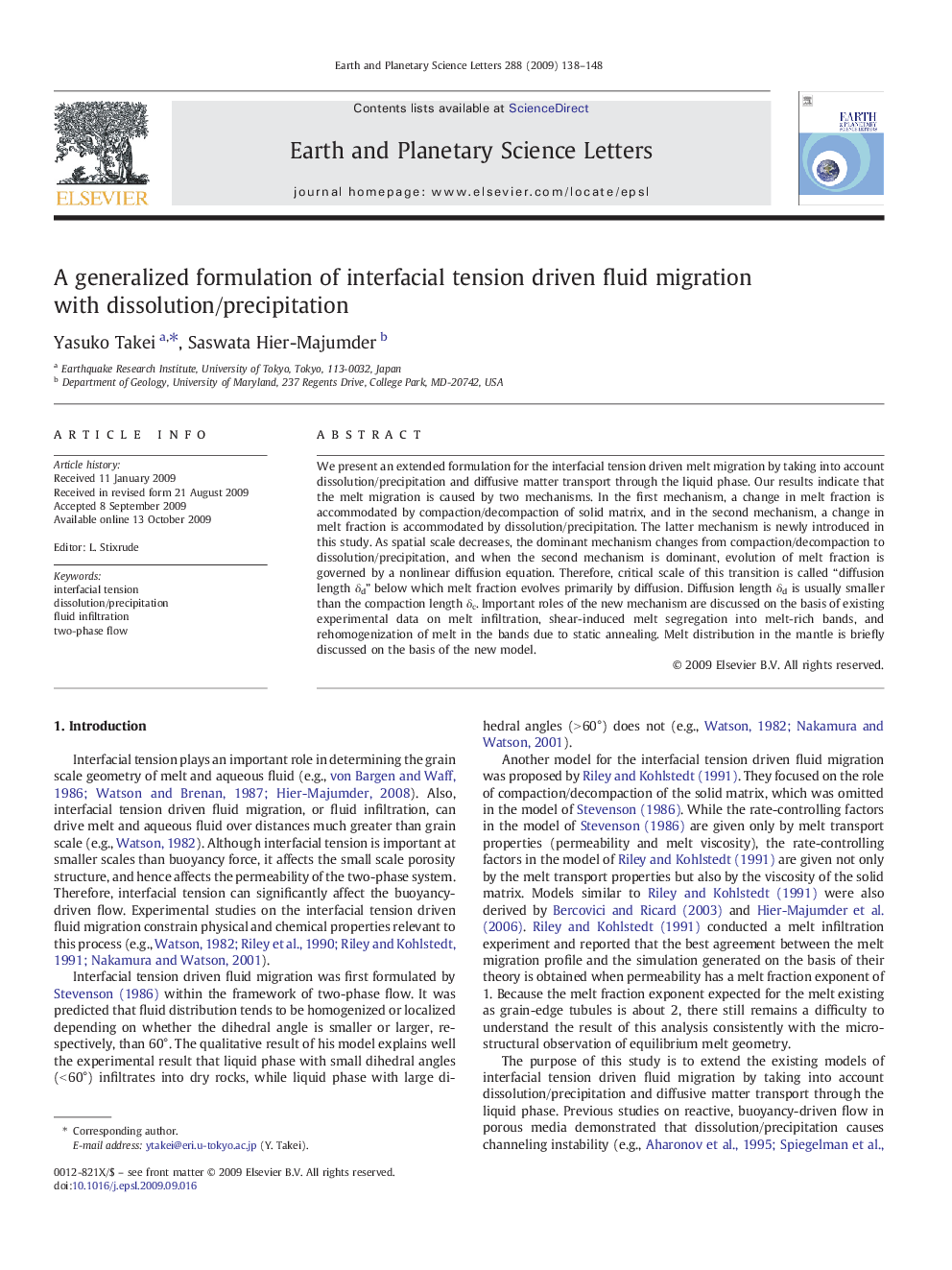| Article ID | Journal | Published Year | Pages | File Type |
|---|---|---|---|---|
| 4678956 | Earth and Planetary Science Letters | 2009 | 11 Pages |
Abstract
We present an extended formulation for the interfacial tension driven melt migration by taking into account dissolution/precipitation and diffusive matter transport through the liquid phase. Our results indicate that the melt migration is caused by two mechanisms. In the first mechanism, a change in melt fraction is accommodated by compaction/decompaction of solid matrix, and in the second mechanism, a change in melt fraction is accommodated by dissolution/precipitation. The latter mechanism is newly introduced in this study. As spatial scale decreases, the dominant mechanism changes from compaction/decompaction to dissolution/precipitation, and when the second mechanism is dominant, evolution of melt fraction is governed by a nonlinear diffusion equation. Therefore, critical scale of this transition is called “diffusion length δd” below which melt fraction evolves primarily by diffusion. Diffusion length δd is usually smaller than the compaction length δc. Important roles of the new mechanism are discussed on the basis of existing experimental data on melt infiltration, shear-induced melt segregation into melt-rich bands, and rehomogenization of melt in the bands due to static annealing. Melt distribution in the mantle is briefly discussed on the basis of the new model.
Related Topics
Physical Sciences and Engineering
Earth and Planetary Sciences
Earth and Planetary Sciences (General)
Authors
Yasuko Takei, Saswata Hier-Majumder,
